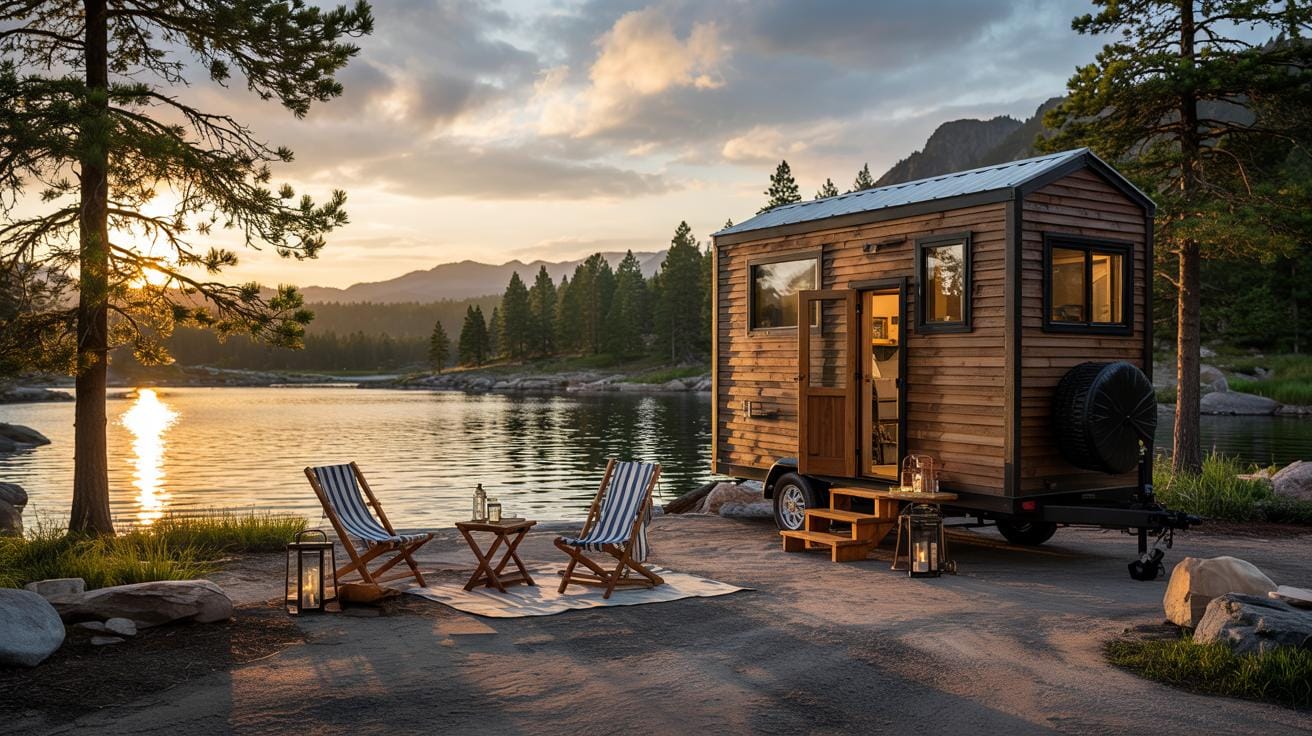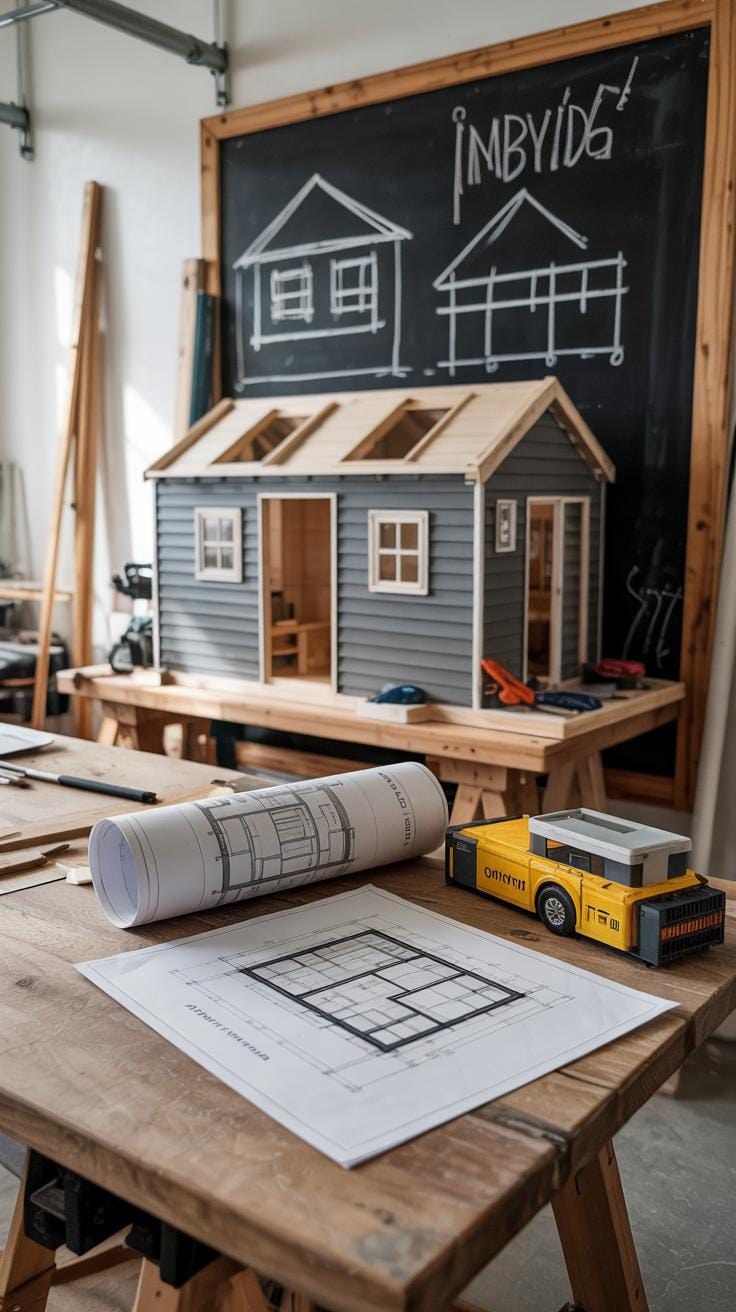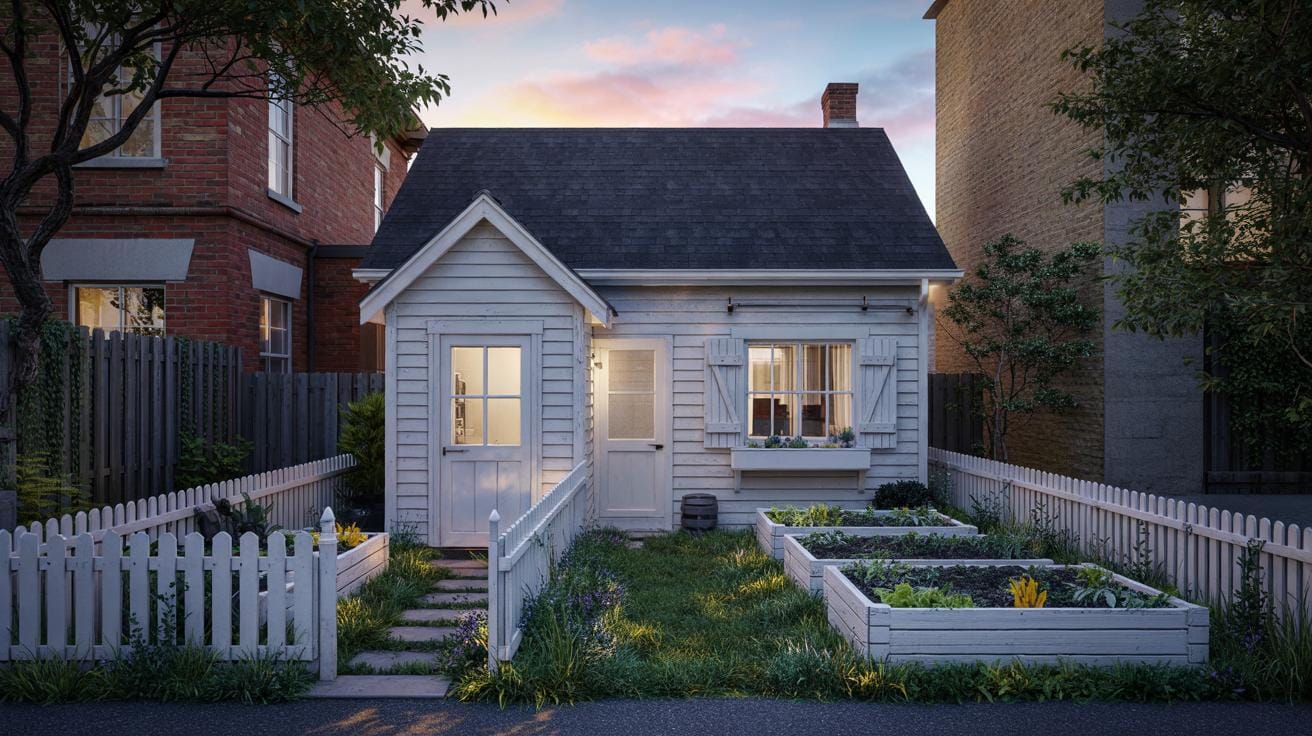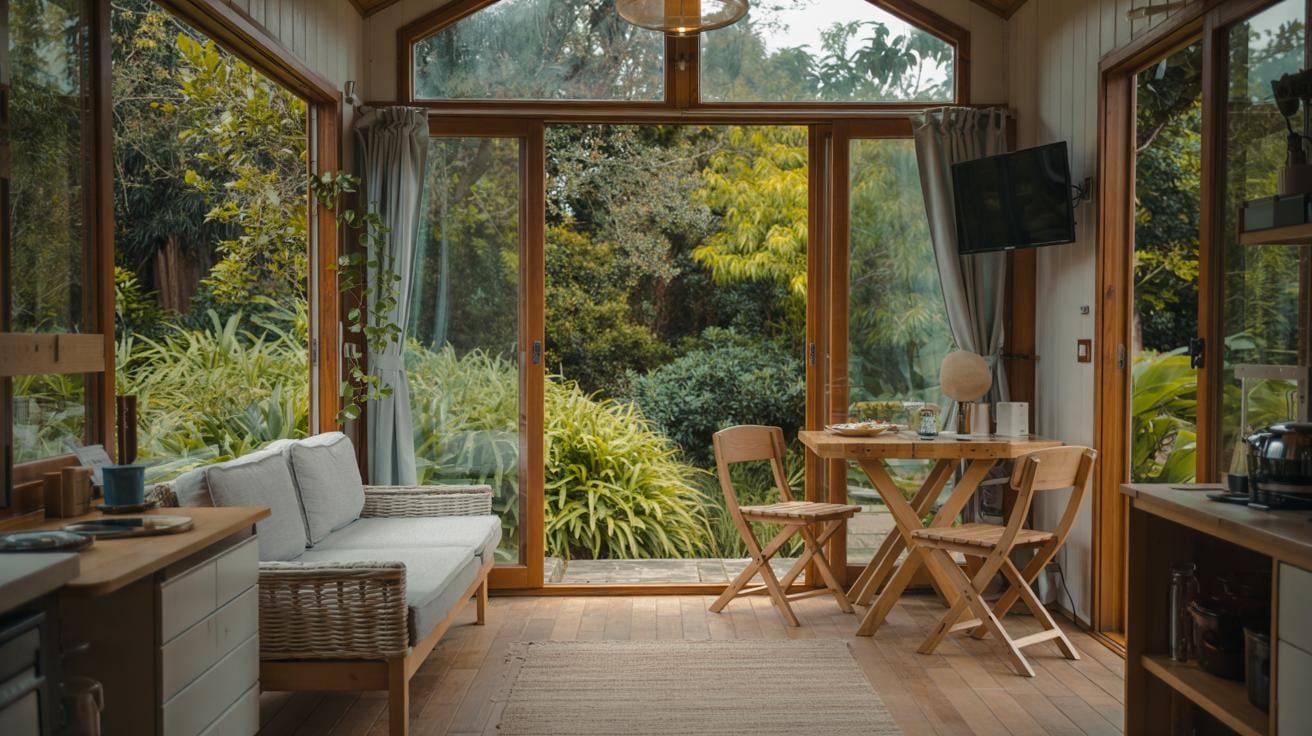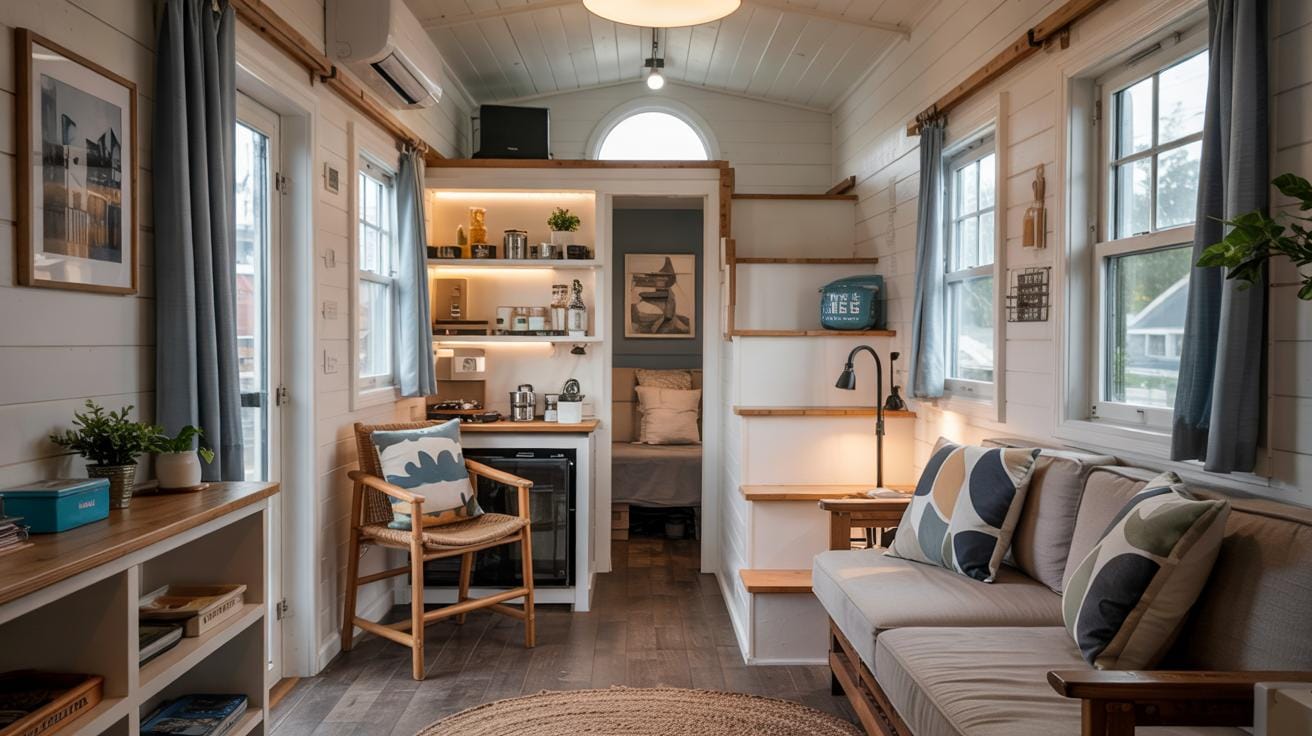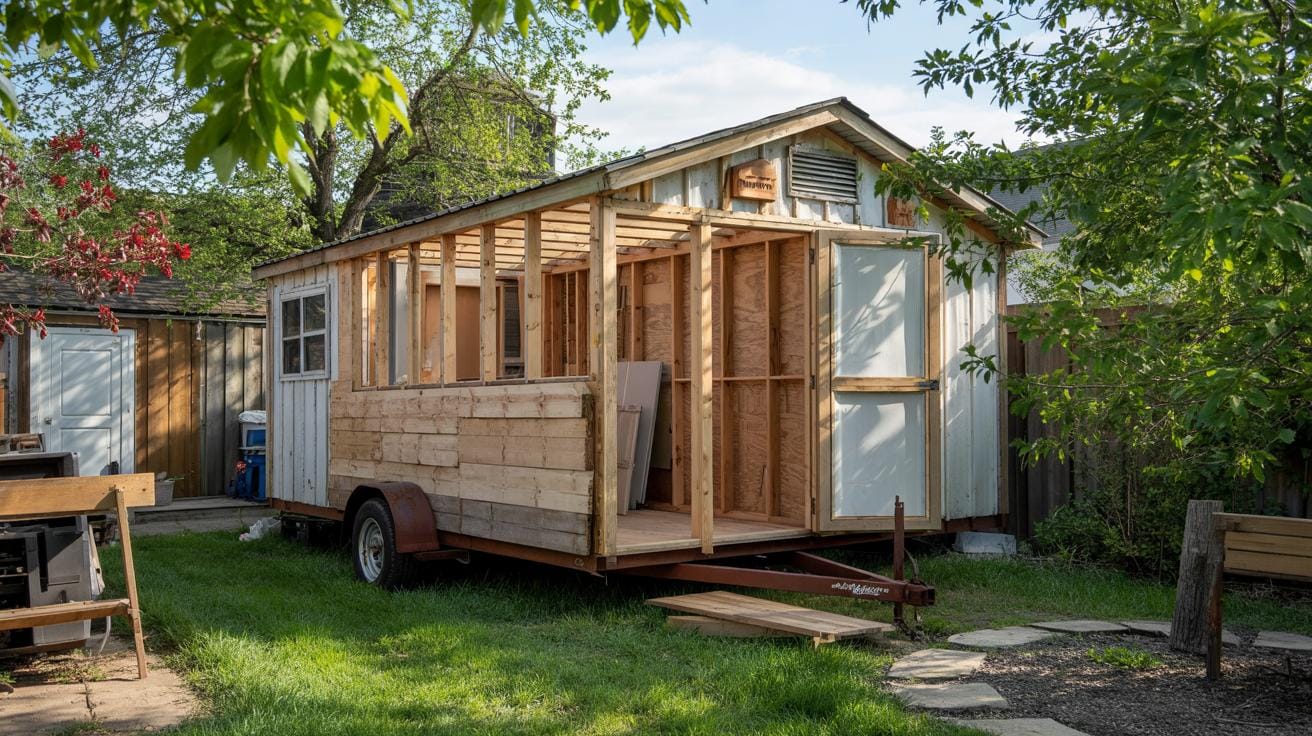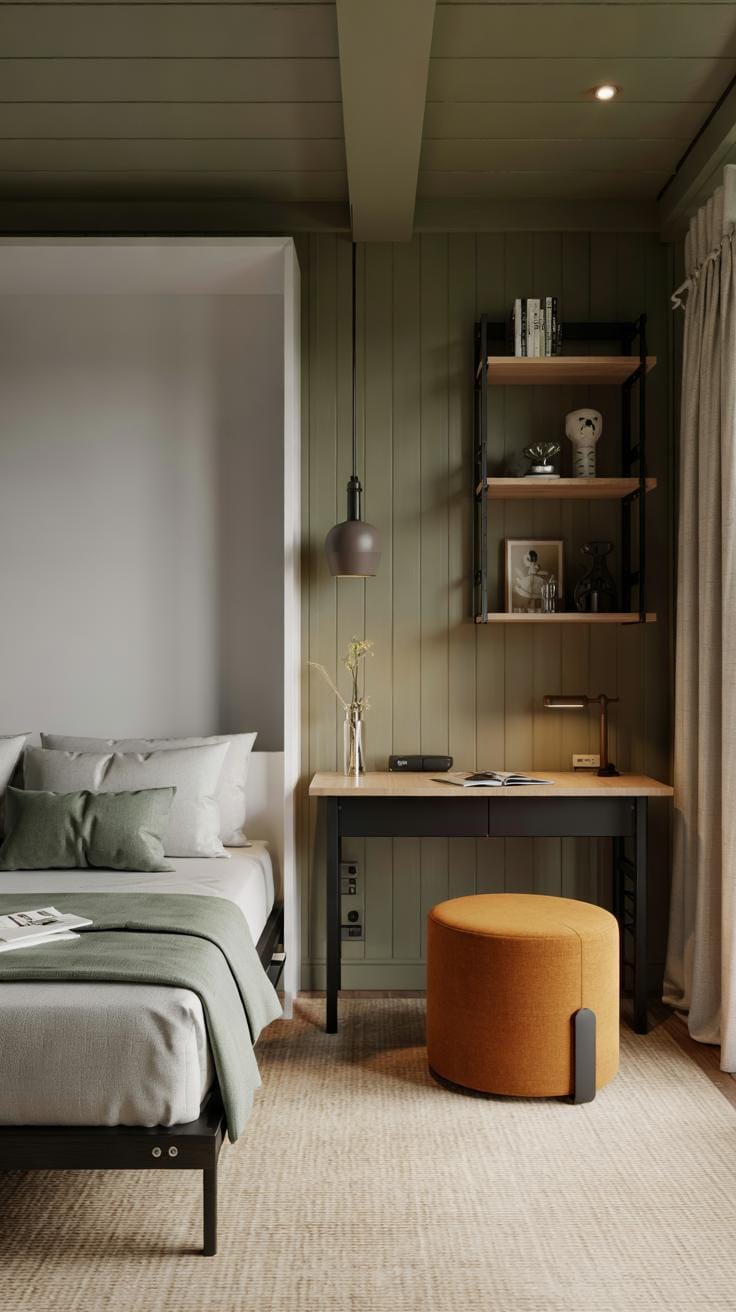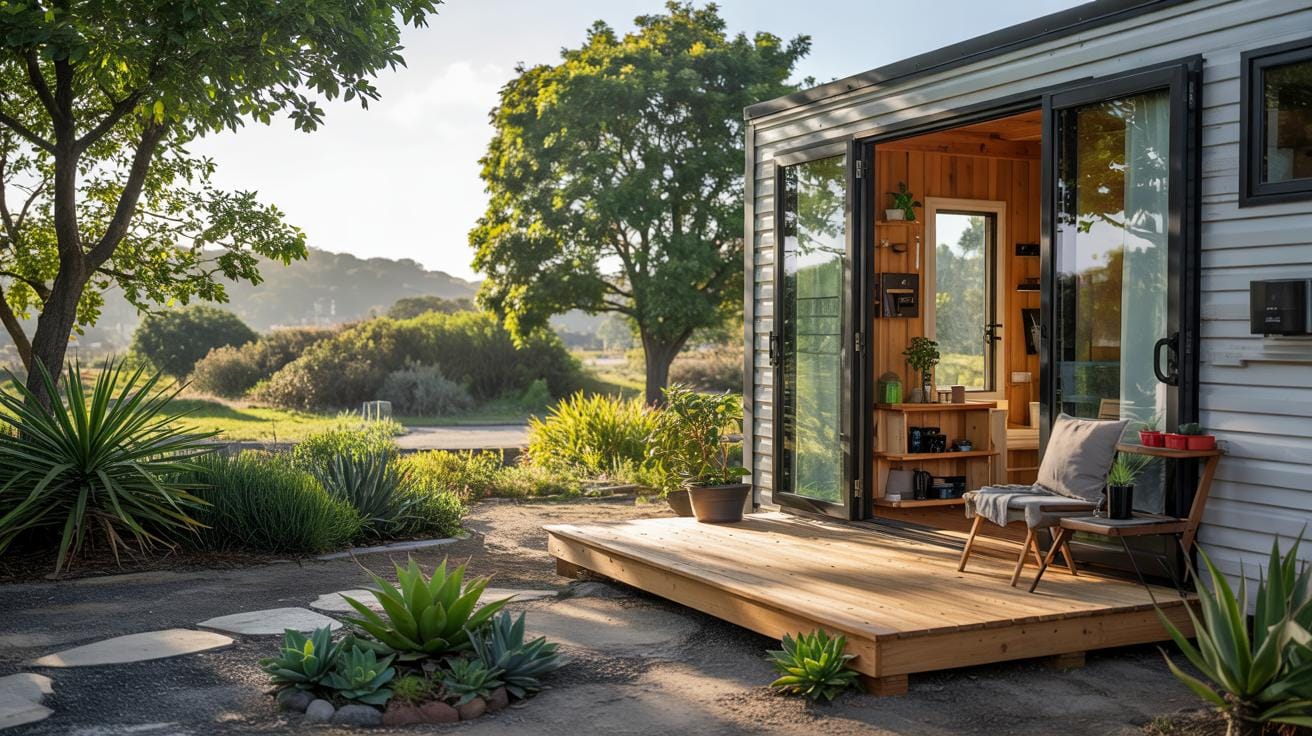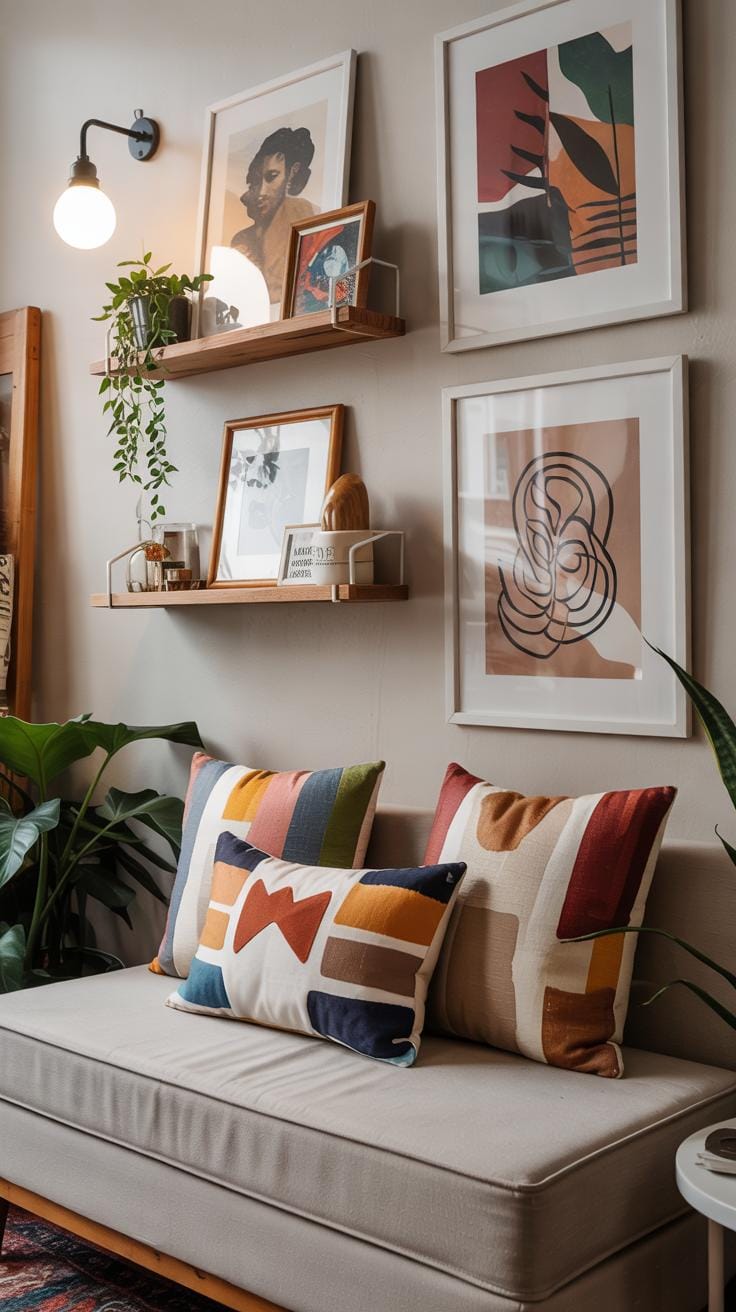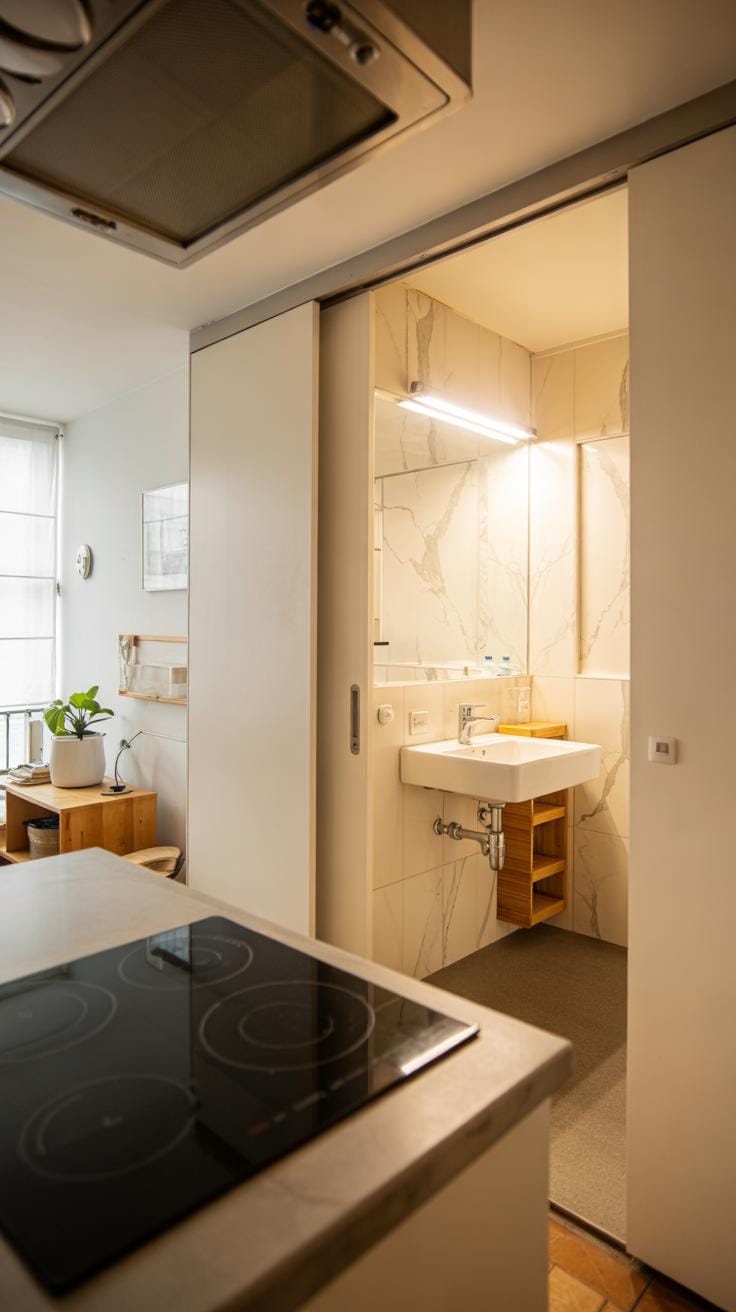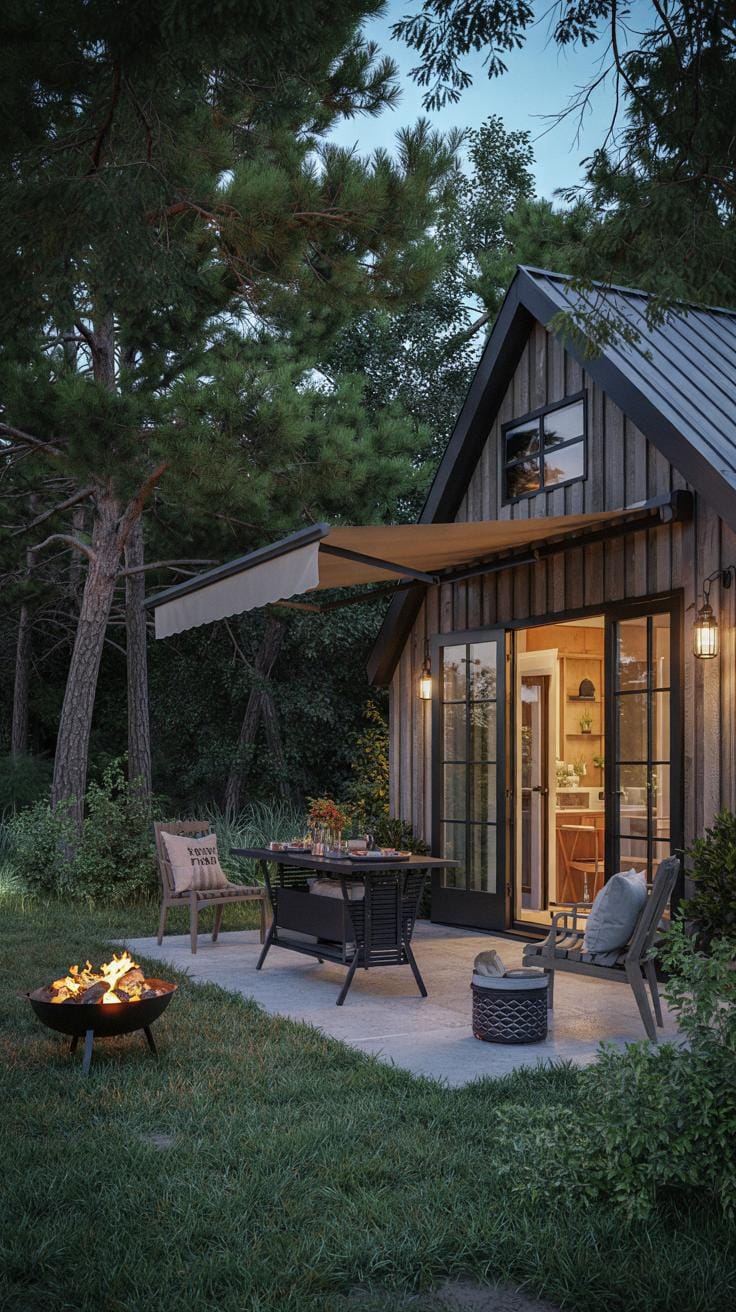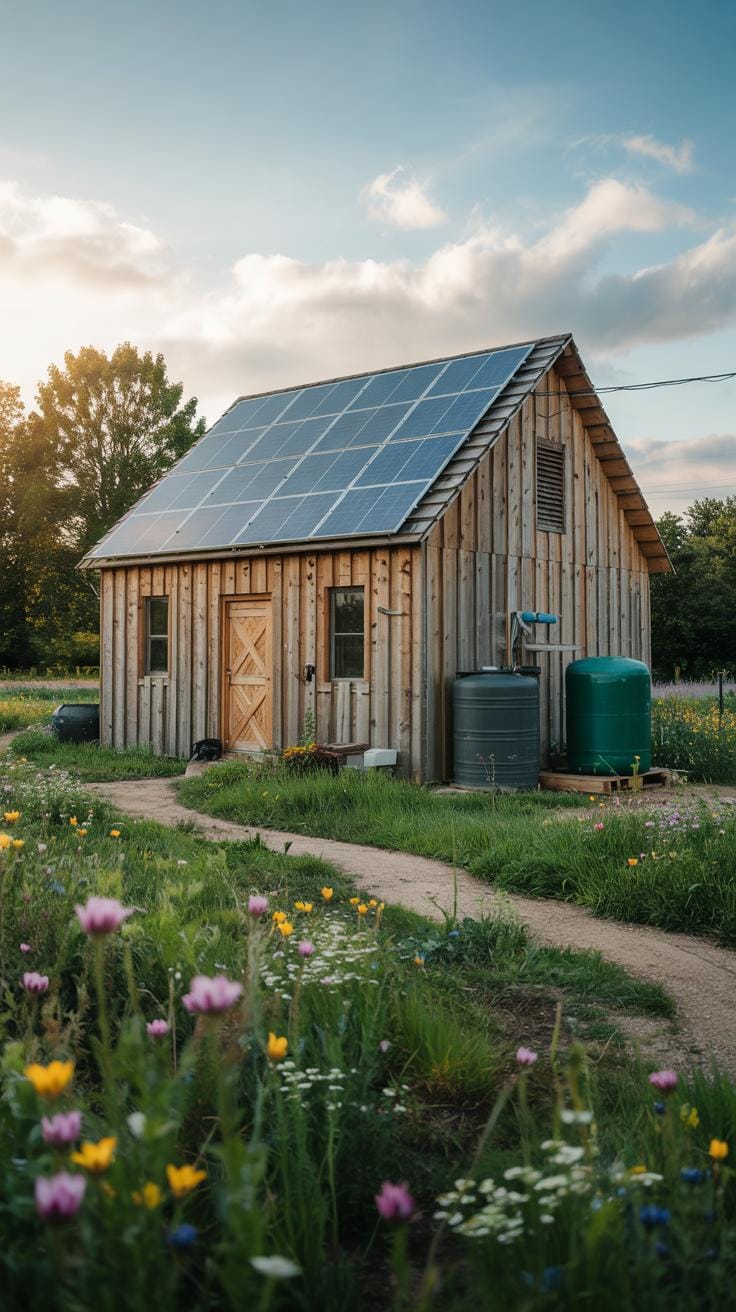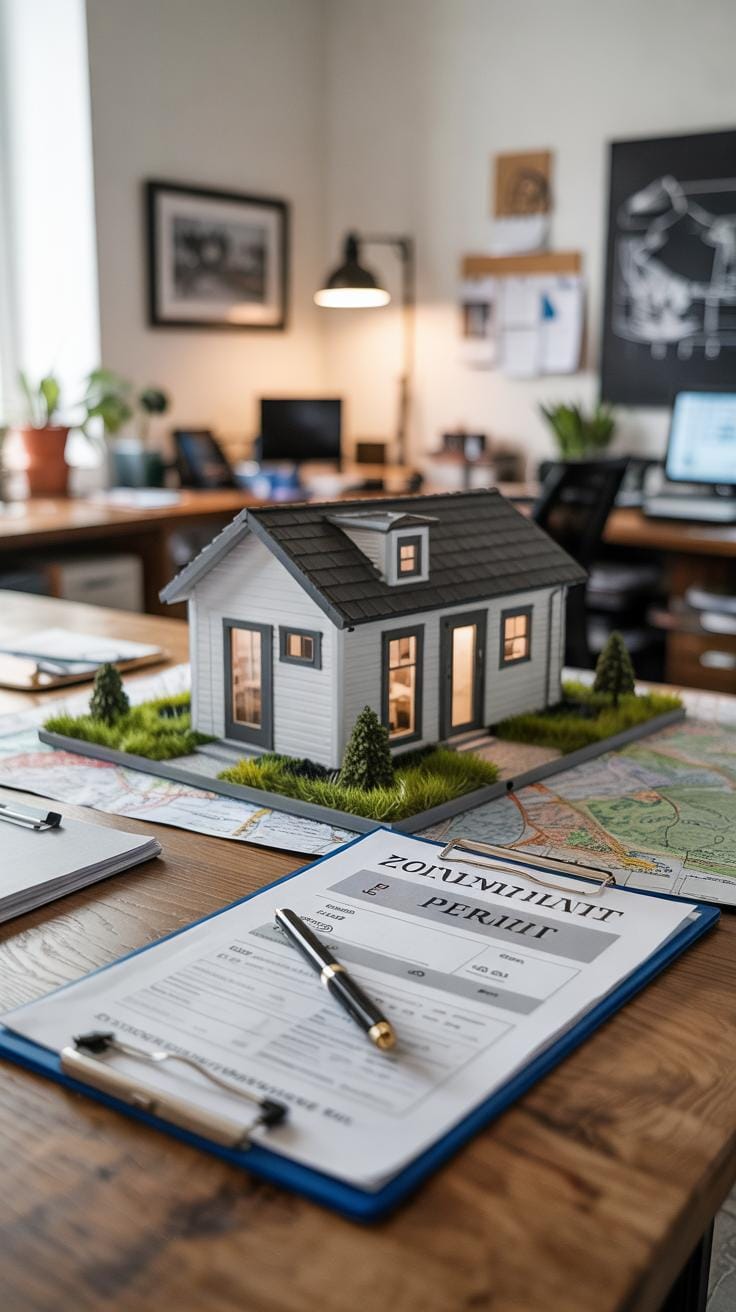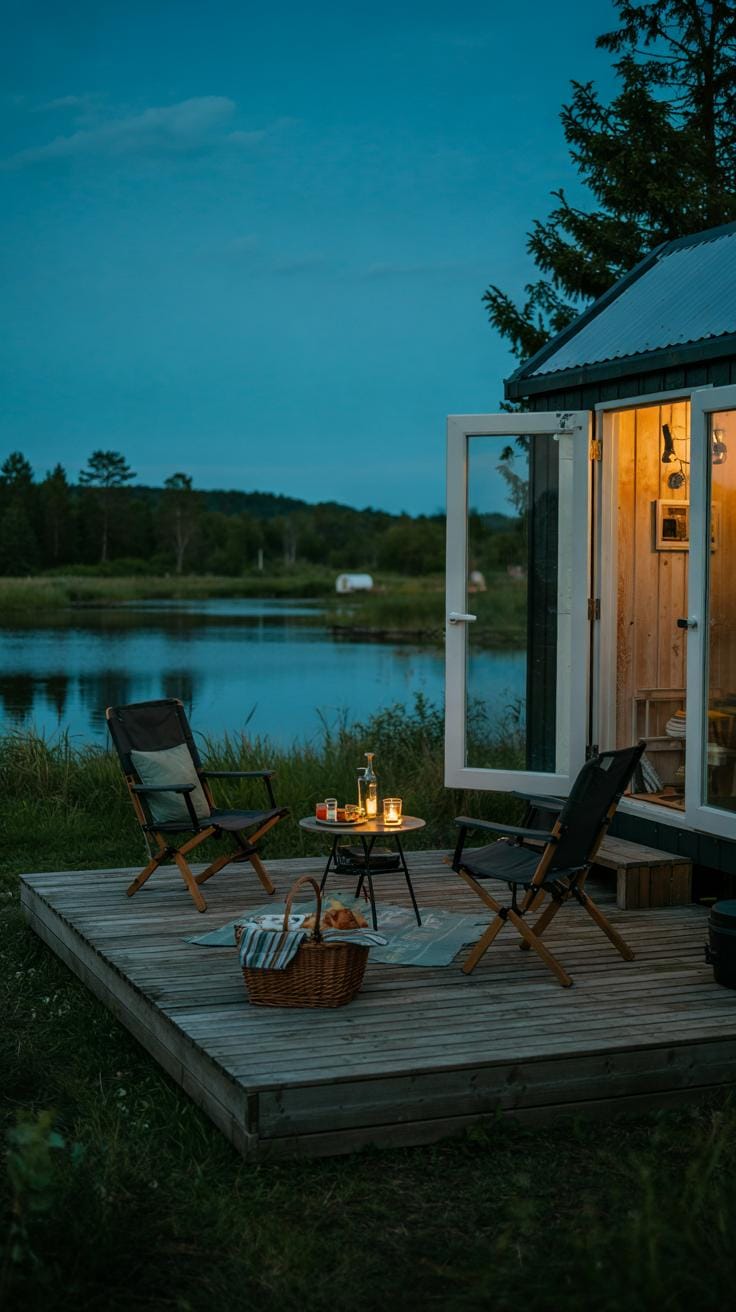Introduction
The tiny house trend encourages living in simpler, smaller spaces that focus on using the area efficiently. Many people are drawn to tiny homes for various reasons including lower costs, less maintenance, and eco-friendlier living. In recent years, tiny homes have become popular for weekend getaways, offering a chance to relax and refresh without the expenses of traditional vacation homes. Inspired by the tiny house movement, these compact homes range from fixed to mobile designs and provide a comfortable retreat with minimal clutter and smart layouts.
Understanding how to design and utilize tiny homes can help you create the perfect weekend getaway experience. By focusing on creativity and practical ideas, tiny homes can maximize every inch for comfort and function. Whether you prefer a cozy cabin in the woods, a small houseboat, or an efficiently arranged trailer, the possibilities are flexible. This article discusses a range of tiny home ideas and creative options that suit different styles and needs, showing you how to plan your own inviting and efficient escape.
Understanding the Tiny House Movement
The tiny house movement began as a response to growing concerns about housing costs and environmental impact. It promotes living in smaller, efficient spaces to reduce expenses and lessen energy use. Most tiny homes measure under 400 square feet, encouraging simplicity without sacrificing comfort. You will find both mobile tiny homes on trailers and fixed tiny homes built on permanent foundations.
Small living means less clutter and easier maintenance, which appeals to many people. However, challenges arise with zoning laws and building codes that do not always support tiny homes. Some areas restrict where mobile tiny homes can park, while others require specific permits for fixed ones. These legal hurdles can affect your ability to place or move your tiny home.
Understanding these factors helps you plan better. Have you considered how these limits might shape your weekend getaway? Knowing the movement’s roots and rules prepares you to choose a tiny home that truly fits your lifestyle and goals.
Key Features of Tiny Homes
Tiny homes usually stay below 400 square feet. This compact size means every inch must be used wisely. Many include essential appliances like a small fridge, stovetop, and sink, but often skip full-sized washers, dryers, or large ovens due to space limits. Some tiny homes feature fold-away furniture or lofted beds to maximize floor space.
Mobility plays a big role. Tiny homes on wheels allow you to travel and change locations easily, while fixed structures offer more stability but less flexibility. Many owners focus on efficient storage solutions and multi-functional furniture to keep their spaces uncluttered and practical.
If you want to build or buy a tiny home, think about which features will help during your weekend trips. Would a mobile setup suit your travel plans, or do permanent amenities better match your needs?
Who Benefits from Tiny Homes
Tiny homes appeal to many groups. People who want to downsize find them perfect for reducing costs and living simply. Some use tiny homes as secondary cabins or vacation spots, offering an affordable weekend retreat. Non-profits sometimes build tiny homes to help homeless individuals by providing safe, private shelter at a lower cost.
Short-term rentals also benefit from tiny homes by attracting travelers who seek unique, cozy stays. You might be someone looking for an easy way to escape city life without a big investment. Who do you see yourself as in this tiny home lifestyle? What benefits matter most for your weekend escape?
Choosing the Best Tiny Home Style for Weekend Getaways
Your weekend getaway should fit how you want to relax and explore. Fixed tiny homes offer stability and comfort, perfect if you have a favorite spot to return to. You can set up with utilities and landscaping that make it feel like a second home. These homes stay put, so think about whether you prefer the comfort of a permanent base or the freedom to roam.
Mobile tiny homes provide the flexibility to visit new places each weekend. If you enjoy variety and adventure, a trailer or van-style tiny home can go wherever you want. This option means less setup but requires careful planning on parking and hookups.
Cabins bring a rustic charm, often located in forests or mountains. They suit those who want a simple shelter close to nature, usually fixed but sometimes movable. Houseboats let you wake up floating on lakes or rivers. This style suits water lovers and offers a unique experience but demands more maintenance.
Consider your style of escape. Are you aiming for peace in one spot or exploring new areas every weekend? Your choice of tiny home should match your vision for rest and adventure.
Fixed vs Mobile Tiny Homes
Fixed tiny homes offer place stability. Once you install one, you don’t have to worry about moving it. You can connect to water and electricity easily. This makes fixed homes comfortable and simple to use. However, you lose flexibility. You’re tied to that one location for your weekends.
Mobile tiny homes let you take your home anywhere. You might park near a lake one weekend and a mountain the next. This opens up new experiences, but you sacrifice some features. Mobile homes may lack full hookups or solid foundations, so setup takes extra effort.
Think about your needs. Would you rather settle into a spot or enjoy changing backdrops? Your answer guides your choice between fixed and mobile.
Unique Tiny Home Types
Treehouses offer a playful, elevated getaway. They place you close to nature and give a fresh perspective. Treehouses work well if you want a quiet, tucked-away retreat.
Floating homes or houseboats provide a day-to-day connection with water. You can fish or swim directly outside your door. This option suits those who love aquatic environments but requires more upkeep compared to land homes.
Shipping container homes bring modern, sturdy design. They can be fixed or mobile and adapted for efficient small living. These homes offer strong protection against weather and can be stacked or combined.
Each type creates a unique way to enjoy your weekends. What kind of setting would make your time off feel special? Choose a tiny home style that matches your idea of refreshment.
SpaceSaving Design Ideas for Tiny Homes
Making the most of limited space requires smart design choices. Multi-functional furniture lets you use a single item for multiple tasks. For example, a sofa can also serve as a bed, or a coffee table can double as storage. Vertical storage opens up floor space by using walls for shelves and hooks. You can keep everything organized without cluttering your home.
Minimalistic layouts help reduce unnecessary furniture and decor. Think about what you really need and prioritize those items. Keeping open pathways makes the tiny space feel bigger and less cramped. You could even consider folding or movable pieces that let you change the space depending on your needs.
What tasks or activities do you want your weekend getaway spot to support? Designing around your main uses will make your tiny home feel more comfortable and functional.
Using Multi-Functional Furniture
Furniture that serves more than one purpose saves space and adds flexibility. Beds with built-in drawers provide storage for clothes or linens. Fold-out tables give you workspace or dining areas that disappear when not in use. Seating options with hidden compartments keep blankets and games out of sight but within reach.
Imagine a bench that transforms into a guest bed or a desk that folds into the wall. These solutions allow you to switch between activities with ease. You don’t lose precious square footage to bulky pieces. Instead, each object adapts to your changing needs.
Ask yourself: How can your furniture do more for you during a weekend escape? Pick items that give you multiple uses without crowding your home.
Smart Storage Techniques
Storing items efficiently helps maintain order in a tight space. Hidden storage under stairs or inside platforms uses unlikely areas. Vertical options, like tall shelves or hanging baskets, keep things off the floor and accessible.
Hooks and pegboards on walls hold tools, kitchen utensils, or accessories. Think about using the insides of cabinet doors for racks or small containers. Drawer organizers help separate and find items easily.
When considering storage, ask where you usually lose space or waste time looking for things. Making use of every nook keeps your tiny home tidy and ready for relaxing weekends.
Creative Interior Decorating Tips
Using light colors on your walls and furniture can make your tiny home feel larger and more open. Light shades like soft white, pale gray, or muted pastels reflect natural light and reduce the sense of confinement. Pair these colors with layered lighting, including ceiling lights, table lamps, and wall sconces, to brighten corners that natural light may miss. This combination helps dissolve shadows and creates an inviting space even in the smallest rooms.
Mirrors have a strong visual effect in making a space seem bigger. Place a large mirror opposite a window to bounce light around the room. A well-placed mirror can also create depth and add interest without taking up floor space. Think about mirror panels on closet doors or smaller decorative mirrors arranged artfully on a wall.
Color and Lighting Choices
Natural light changes throughout the day and can shift the mood in your tiny home. Consider window coverings that allow privacy without blocking sunlight. Sheer curtains or adjustable blinds work well. When natural light dims, use warm-toned bulbs to maintain a cozy feel without shrinking your visual space. Avoid heavy or dark fixtures that absorb light; instead, select light wood finishes, glossy surfaces, or reflective accents.
Efficient lighting means placing lights where they serve multiple purposes. For example, a reading lamp near the sitting area can double as task lighting for meals or hobbies. Have you thought about using dimmers? They give you control over brightness and help adjust the atmosphere for relaxation or activity.
Adding Personal Style
In a small home, every item you choose should mean something to you. Art pieces with personal meaning can brighten walls without overcrowding them. A few framed photos or prints hung neatly bring character without clutter.
Textiles like colorful cushions, throws, or a patterned rug add warmth and comfort. Choose fabrics that you enjoy looking at and touching, since they make the space feel homey. Living plants also bring life and freshness, cleaning air and softening hard lines. Select plants that thrive indoors with low maintenance, such as succulents or pothos.
How can you show your personality without filling every surface? Try rotating decor to keep the environment lively yet simple. This approach respects your limited space while ensuring your tiny home feels uniquely yours.
Functional Kitchen and Bathroom Solutions
Your kitchen and bathroom in a tiny home need careful design to save space and stay practical. Small kitchens must include efficient appliances that fit well without crowding. Choosing a layout like a single-wall or L-shaped kitchen helps use corners and walls smartly. Installing a two-burner stove instead of a full range saves room but still cooks meals quickly. A compact refrigerator and a microwave oven that doubles as a convection oven cut down on bulky equipment. Can you imagine how much countertop space you can gain by using fold-down counters or pull-out cutting boards?
Water use is another concern, especially in bathrooms. Low-flow faucets and showerheads reduce water waste. Consider a composting toilet, which doesn’t need plumbing and saves water. Space-saving fixtures like corner sinks make use of tight areas you might otherwise ignore. For showers, a wet bath design can combine the shower and toilet space efficiently, with waterproof walls and floors. Would you prefer a small footprint shower stall or a fold-away shower screen to open up your bathroom when not in use? These ideas make tiny home living both practical and comfortable for your weekend escape.
Compact Kitchen Essentials
Small kitchens work best with essential appliances that serve multiple purposes. A single-burner induction cooktop uses less space and heats quickly. A small refrigerator under the counter keeps food fresh without a large footprint. You might add a toaster oven that bakes, broils, and toasts to replace a full-size oven. A compact coffee maker or electric kettle suits morning routines without clutter. Choose drawer organizers to keep utensils and spices neat. Open shelving or magnetic strips on walls save cabinet space and keep things handy. How would you arrange these items to create the most efficient kitchen workflow in your tiny home?
Bathroom Design for Tiny Spaces
Designing a tiny bathroom means selecting fixtures that fit precisely and feel open. Corner sinks take up less space and leave room for storage beneath. Composting toilets remove the need for complicated plumbing and reduce dependence on water. Showers with glass doors or curtains can visually expand the space. A wet bath combines the toilet and shower areas, letting you clean the whole room with a drain in the floor. Wall-mounted faucets and towel racks free up counter and floor space. Have you thought about adding built-in shelves or using recessed medicine cabinets to maximize storage without crowding your bathroom?
Outdoor Living and Extensions
Your tiny home’s living space doesn’t have to stop at the door. Outdoor areas can become vital extensions of your weekend getaway retreat. Adding a patio or deck creates room for cooking, dining, and relaxing while staying close to nature. A simple wooden deck can boost your usable space significantly without overwhelming your tiny home’s footprint.
Portable shade structures, like pop-up canopies or retractable awnings, give you control over sun protection and comfort. These options allow you to enjoy fresh air during hot afternoons or provide shelter when the weather shifts unexpectedly. Have you thought about how you might create an inviting flow from inside your tiny home to these outdoor spots?
Strategically designed outdoor extensions can transform your weekend escape into a more comfortable and versatile living area. They answer the challenge of limited indoor space with fresh air and open views, encouraging you to spend more time outside without sacrificing comfort.
Creating Outdoor Seating Areas
Comfort and function are key when designing outdoor seating. Choose furniture that fits your limited space but still invites you to linger. Folding chairs, stackable stools, or benches with built-in storage are good choices. A small table can hold meals or games without crowding your deck or patio.
Arrange seating to face common focal points such as a fire pit, garden, or scenic view. You could also create multiple smaller seating clusters if space allows, making your outdoor area flexible for socializing or solitude. What kind of layouts help you feel most relaxed outside your tiny home?
Opting for lightweight, weather-resistant furniture makes setting up and storing easier, especially if you need to pack up before heading home. These thoughtful choices maximize comfort while preserving valuable space around your tiny getaway spot.
Adding Covered Spaces
Adding shelter to your outdoor area protects you from sun and rain, letting you enjoy fresh air no matter the weather. Awnings offer adjustable coverage and can be rolled back when not needed, perfect for flexible use. Pergolas provide a semi-open framework that supports climbing plants, adding shade and style simultaneously.
Tents or pop-up canopies create portable covered spaces you can set up quickly. These structures also expand your functional area for cooking, dining, or relaxing. Do you prefer a permanent solution like a pergola, or a removable option that packs away when you’re ready to move on?
Covered extensions let your tiny home feel larger and more connected to the outdoors. Thoughtful selection of these features complements your small indoor footprint by creating versatile spaces designed for comfort.
Sustainable and EcoFriendly Features
Your tiny home can include many green technologies to cut down energy use and protect the environment. Solar panels and wind turbines often power these small spaces. They let you enjoy electricity without relying on the main grid. This setup reduces your carbon footprint and can lower costs over time.
Water conservation matters in tiny homes. Installing low-flow faucets and showerheads helps reduce water waste. Collecting rainwater offers a backup source for watering plants or cleaning. Composting toilets turn waste into useful compost, saving water and reducing pollution. Choosing building materials like bamboo, reclaimed wood, or recycled steel lowers the impact on natural resources. These materials last long and use fewer chemicals. What eco-friendly practices could you add that fit your lifestyle and location?
Using Solar Power and Other Renewable Energy
Solar power makes great sense for weekend tiny homes. A small solar panel system can run lights, fans, and small appliances. You don’t need a big setup to power your essentials. Panels mount easily on rooftops or nearby ground mounts. Pairing them with batteries stores energy for cloudy days or night use. Wind turbines can supplement solar power if your spot is windy.
Renewable energy options reduce your fuel expenses and environmental damage. Before choosing a system, assess your typical energy needs. Consider how often you’ll visit and weather patterns. Would a simple solar kit with portable panels work for your trips? Setting up off-grid energy could make your getaways more peaceful and self-sufficient.
Water and Waste Management
Saving water starts with installing water-saving devices like low-flow taps and showerheads. These simple changes decrease the water you use without sacrificing comfort. Collecting rainwater creates a valuable source for irrigation or cleaning without tapping your main supply. Setting up a rainwater barrel is budget-friendly and easy to maintain.
Managing waste responsibly is crucial for tiny homes off the grid. Composting toilets reduce water use and transform waste into compost that enriches soil. These toilets need less maintenance and avoid the need for septic systems. Think about your weekend location’s rules and available space when choosing waste solutions. How could these water and waste strategies make your stay more eco-friendly and low-impact?
Legal and Zoning Considerations
Before placing your tiny home for a weekend escape, you must understand the legal rules that affect where and how you build it. Local zoning laws control what types of buildings can exist in specific areas. These laws often limit the size, use, and location of structures on a property. Some communities restrict tiny homes to certain zones like agricultural or residential. If you want to put your tiny home on a plot of land, check with your city or county zoning office. Ask if tiny homes are allowed and what conditions they require. Could you park your home on a trailer, or does it need a permanent foundation? Knowing these details saves time and money while avoiding problems later.
Navigating Zoning Laws
Zoning rules vary widely from place to place. Some towns ban tiny homes outright, while others welcome them with open arms. You can usually find zoning maps and regulations online through local government websites. Look for terms like “accessory dwelling unit” or “secondary residence,” as tiny homes may fit under these categories. Call your city planner’s office if you need clarity. Ask about minimum lot sizes, setback requirements, and whether you can use a tiny home year-round or just seasonally. Taking time to review these restrictions helps you pick a location that fits your getaway style and avoids legal troubles.
Building Codes and Permits
Building codes ensure your tiny home meets health, safety, and structural standards. These codes apply even if your home is small. Depending on where you live, you might need permits for plumbing, electrical work, and the overall build. Some areas require inspections before allowing occupancy. If you build your tiny home on a trailer, it may follow RV standards, which differ from traditional building codes. Research local code requirements early. Talk to building inspectors about which permits you need and how to apply. Proper permits protect you from fines and make your tiny home a safe retreat.
Budgeting and Cost Management
Creating a budget for your tiny home project helps you stay in control of expenses. Start by listing all costs involved, such as materials, labor, permits, and tools. Don’t forget to include fees for inspections or utility hookups if needed. Research local prices to get realistic estimates. Build a buffer of at least 10 to 15% for unexpected expenses like repairs or changes during construction.
Think about where you can cut costs without affecting safety or comfort. Buying secondhand materials or fixtures is one way to save. Using recycled wood or fixtures that still work well lowers costs. Doing some of the work yourself, like painting or assembling furniture, also reduces labor fees.
Consider planning your tiny home in phases. Focus first on the essentials, then add optional features later if your budget allows. Stay organized with expense tracking to avoid surprises. What areas in your design might offer space to save without losing quality? Careful planning makes your tiny home dream more affordable and still enjoyable.
Planning Your Budget
Begin your budget by listing every major expense. Think of materials like wood, insulation, windows, and doors. Include labor costs whether you hire professionals or subcontractors. Don’t overlook permit fees and inspection costs required by local authorities. These often catch people off guard.
Request quotes from multiple suppliers and contractors. Comparing helps you find competitive prices and avoid overpaying. Set a realistic timeline. Longer projects can increase costs, so factor in potential delays.
Break down your budget into categories and track progress regularly. Use apps or spreadsheets to update numbers as you go. Planning photo or video documentation may benefit your timeline and budget checks. How detailed can your budget get to spot issues early? Getting this right upfront sets your project on the right path.
Saving Money Without Sacrificing Quality
Focus on smart choices to save money without cutting corners. Choose durable, energy-efficient materials that last longer and reduce utility bills. Buying in bulk or sourcing locally can lower material costs. Check salvage yards or online marketplaces for good deals on cabinetry or appliances.
Do small tasks yourself to reduce labor bills. Painting, landscaping, or simple assembly projects are great starting points. Look for modular or multifunctional furniture to maximize space and cut replacement needs.
Think about energy savings, like solar panels or efficient heating, which pay off over time. Avoid overly customized designs that increase material waste or construction complexity. Which parts of your tiny home provide the best value for your money? Apply these cost-saving steps to keep your home cozy and affordable.
Making the Most of Your Tiny Home Weekend Getaway
You can enjoy your tiny home weekend by balancing quiet time with moments to connect. Spending a few hours alone helps you recharge and enjoy the peacefulness of your small space. At the same time, inviting friends or family for a shared meal or a game creates memorable social moments.
Think carefully about what to bring to avoid clutter. Bring only essentials and multi-purpose items that help you stay comfortable and organized. Packing light means you have more space to move and relax.
Plan activities that fit the setting. Hiking, fishing, or simple outdoor yoga complement tiny home life well. Ask yourself: which activities help you disconnect from daily stress and connect with your surroundings? This balance between solitude and social time lets you return refreshed and fulfilled.
Packing Smart for Your Weekend
Choose items that serve more than one purpose. A good example is a blanket that works for picnics and warmth. Pack compact cookware designed for small spaces, like nesting pots and pans.
Bring lightweight clothing suitable for the weather and easy to layer. Include reusable water bottles to stay hydrated while cutting down on waste.
Don’t forget a headlamp or compact flashlight to free your hands after dark. A portable phone charger also helps keep your devices ready without bulky cords.
Think about comfort: a small pillow, travel-sized toiletries, and your favorite book can make the tiny home feel like your cozy retreat.
Enjoying Your Time in a Tiny Home
Use the space to slow down. Sit with your morning coffee on the porch and listen to the sounds around you. This quiet moment can ground your entire weekend.
Try simple cooking in your tiny kitchen. Preparing meals together with loved ones can bring fun and connection. If the setting allows, cook outdoors for a fresh experience.
Plan nature walks or explore nearby trails. Observing wildlife or collecting natural items for a small craft can turn simple outings into lasting memories.
Ask yourself what brings you peace. It might be journaling, stargazing, or sharing stories by a campfire. Make your tiny home the base for moments that matter.
Conclusions
Living or vacationing in a tiny home offers practical advantages and unique experiences. Through smart design, creative ideas, and attention to space usage, tiny homes can provide comfort and functionality despite their smaller size. These homes encourage a simpler lifestyle and a closer connection with nature or surroundings during weekend getaways. Considering the types, design elements, and budget can help you find or build a tiny home that suits your personal needs and travel preferences.
The tiny house lifestyle challenges traditional views on living spaces and vacation homes. Embracing this approach requires thoughtful planning, from legal compliance to sustainability and budgeting. However, the rewards include lower costs, less maintenance, and increased freedom to explore different locations. Tiny homes are becoming a viable solution for creating memorable weekend escapes that feel cozy, efficient, and refreshing. Will you design your own tiny retreat to enjoy nature and recharge?

